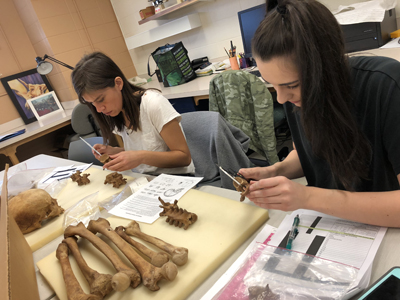The Human Osteology Lab provides a space and material for student engagement with hands-on learning and research experiences focused on human skeletal remains. The lab is used to teach courses at both the undergraduate and graduate levels on human osteology, forensic anthropology and dental anthropology with an emphasis on methods used within bioarchaeology, paleoanthropology, and forensics. Ongoing faculty and student research is focused on the documentation and analyses of human variation, growth and development, dental variation as well as late Pleistocene hominin dispersal patterns across Central Asia.
Equipment & Software
- Standard osteometric devices (calipers, osteometric boards, etc.)
- Dissecting microscope
- Microscibe - to collect and analyze geometric morphometric landmark data
- FORDISC - Fordisc is a computer program that uses statistical methods to estimate sex, ancestry, and stature from skeletal measurements
- Standard statistical software packages
- ArcGIS
- Computer stations
Collections
The Human Osteology Lab houses 155 human skeletons from an unmarked cemetery associated with the late 19th Century Colorado Insane Asylum in Pueblo, Colorado. Additionally, the lab houses a number of real and casted specimens representing various stages of human skeletal and dental developmental, trauma, and pathological conditions.
